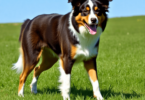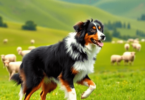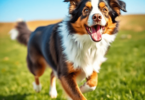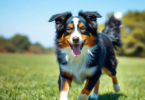Boxer Dog Breed Explained
The Boxer breed has an interesting history that goes back to Germany, where these dogs were originally developed from the now-extinct Bullenbeisser. Originally bred for hunting large game, Boxers have evolved into beloved family companions known for their energetic and playful nature. Understanding their size and physical characteristics is essential for prospective owners, as it influences not only the dog’s suitability for various living situations but also its health and care needs.
This article will provide you with a comprehensive overview of Boxer dogs, focusing on:
- The general size classification of Boxers
- Differences between male and female sizes
- A deep dive into their distinctive physical traits, including coat colors and patterns
- Growth stages from puppyhood to adulthood
Armed with this knowledge, you’ll be well-prepared to determine if a Boxer is the right fit for your family!

1. Boxer Dog Size and Weight
Boxers are classified as a medium to large-sized breed, making them perfect companions for those who love a dog with a bit of presence. Understanding Boxer dog size can help potential owners prepare for the space and care these lively pups require.
Size Differences: Male vs. Female
- Males typically stand between 23 to 25 inches (58 to 63 cm) at the shoulder and weigh around 60 to 70 pounds (27 to 32 kg).
- Females are slightly smaller, reaching heights of 21 to 23 inches (53 to 58 cm) and weighing in at 50 to 60 pounds (23 to 27 kg).
Average Weight Range
The average weight range for Boxers reflects their muscular build, with most falling comfortably within the outlined parameters. A well-balanced diet and regular exercise contribute significantly to maintaining this robust physique.
Size Comparison with Similar Breeds
When comparing Boxer dog size with other breeds, notable contenders include:
- Cane Corso: These gentle giants tower over Boxers, often weighing between 88 to 120 pounds (40 to 54 kg).
- Boston Terrier: On the opposite end of the spectrum, Boston Terriers are much smaller, usually weighing between 10 to 25 pounds (4.5 to 11 kg).
Understanding these size and weight dynamics enriches one’s appreciation of the Boxer breed.
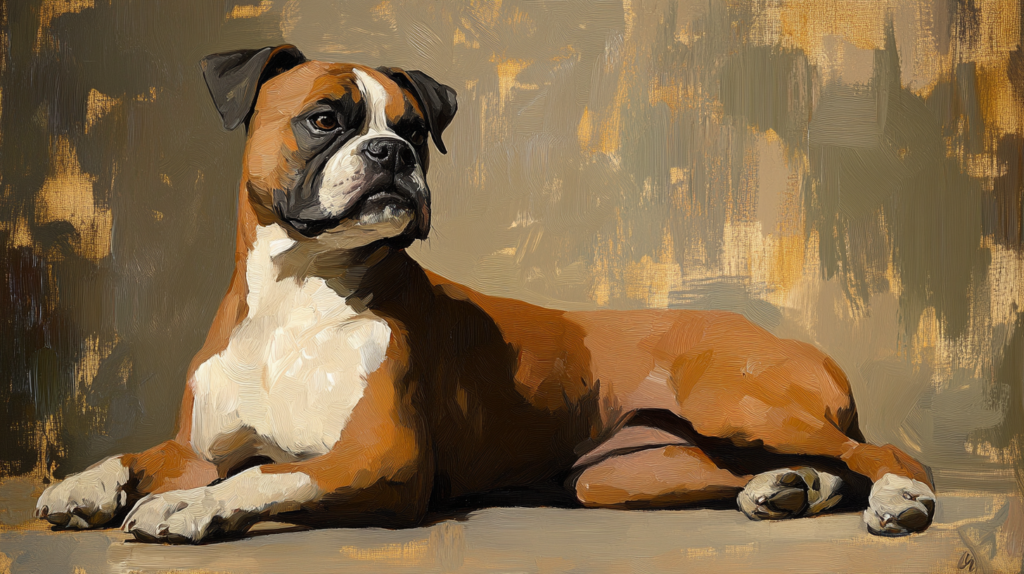
2. Boxer Dog Physical Characteristics
Boxers are not just a pretty face; their physical characteristics tell a story of strength, agility, and playful charm. Understanding the Boxer breed standard reveals much about their distinctive appearance and personality traits.
Coat Colors and Patterns in Boxers
One of the most captivating aspects of Boxer dogs is their diverse coat colors and patterns. While they may come in various shades, three primary colors stand out:
- Brindle: This striking pattern features a base color overlaid with dark stripes. The result? A unique, tiger-striped appearance that makes each Brindle Boxer one-of-a-kind.
- Fawn: Ranging from light tan to deep gold, Fawn Boxers showcase a warm and inviting hue. Their solid color creates a sleek look that highlights their muscular build.
- White: These dazzling pups often have predominantly white coats, sometimes with patches of brindle or fawn. Though less common, White Boxers are known for their gentle demeanor and friendly nature.
Each coat color can vary in intensity and saturation, providing room for personal taste when choosing a Boxer companion.
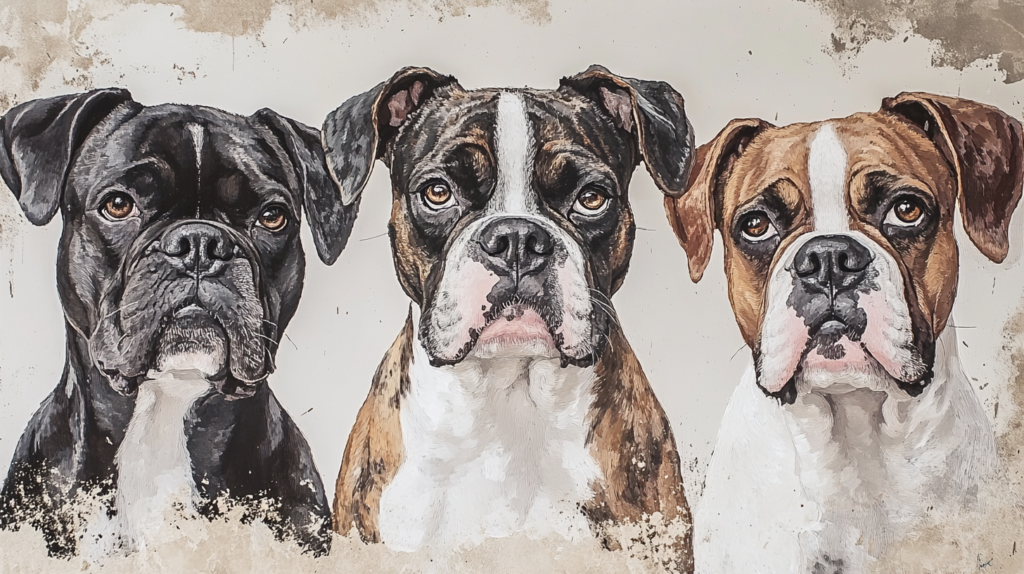
Explanation of Color Patterns and Variations within the Breed
The variations within the Boxer breed’s coat patterns extend beyond mere colors. Here are some fascinating details:
- Brindle with Fawn: Often seen as a combination pattern, these Boxers may display fawn-colored patches alongside their brindle stripes, adding depth to their appearance.
- Masked Boxers: Boxers can also have facial masks—dark pigmentation around the eyes and snout—that adds to their expressive personality. This mask can be more pronounced in some dogs than others.
Understanding these physical traits helps appreciate the individuality of each Boxer.
In terms of body structure, Boxers exhibit robust athleticism through their muscular build and square-shaped heads. Their strong jaws contribute to their playful yet powerful demeanor, perfect for games of fetch or tug-of-war.
Distinctive Facial Features
The Boxer breed is known for its striking and unique facial features. These traits are important in understanding the physical characteristics of Boxers, as defined by the American Kennel Club and Fédération Cynologique Internationale standards.
Key features include:
- Head Shape: Boxers have a square-shaped head, which gives them a strong and bold appearance. This shape is not just for looks; it also contributes to their sturdy body structure.
- Jaws: Strong jaws are a defining feature of the breed, built for strength and endurance. This trait reflects their history as hunting dogs, originally bred from the Bullenbeisser.
- Eyes: Their eyes are medium-sized, expressive, and set wide apart, often conveying a friendly yet alert expression. The dark coloring adds to their captivating gaze.
- Muzzle: The short, broad muzzle enhances their distinctive look while supporting their physical abilities during play and activity.
This muscular build and athleticism represent not only beauty but also functionality. With coat colors like brindle, fawn, and white Boxer variations adding to their appeal, it’s easy to see why these dogs are both admired for their looks and loved for their playful personalities.

Tail Characteristics of Boxers
The tail characteristics of Boxer dogs are important for their appearance and breed standard. Usually, Boxers have a medium-length tail that is positioned high on their body.
Tail Length and Shape
- Boxers have naturally short tails that often come to a point.
- When left unaltered, their tails have a graceful curve that highlights the dog’s athletic build.
Sometimes, you may come across Bobtail Boxers, which are bred to have even shorter tails. This distinct feature can be caused by natural mutation or specific breeding practices aimed at achieving a particular look.
Unique Features of Bobtail Boxers
- Bobtail Boxers may have tails that are almost nonexistent or significantly smaller in size.
- Despite this variation, they still meet the Boxer breed standard, with muscular bodies and square-shaped heads typical of the breed.
Knowing about these physical traits of Boxer dogs helps us understand their abilities and adaptability as active companions. Their athleticism, combined with unique tail characteristics, adds to their playful nature while staying true to the breed’s history and standards set by organizations like the American Kennel Club and Fédération Cynologique Internationale.
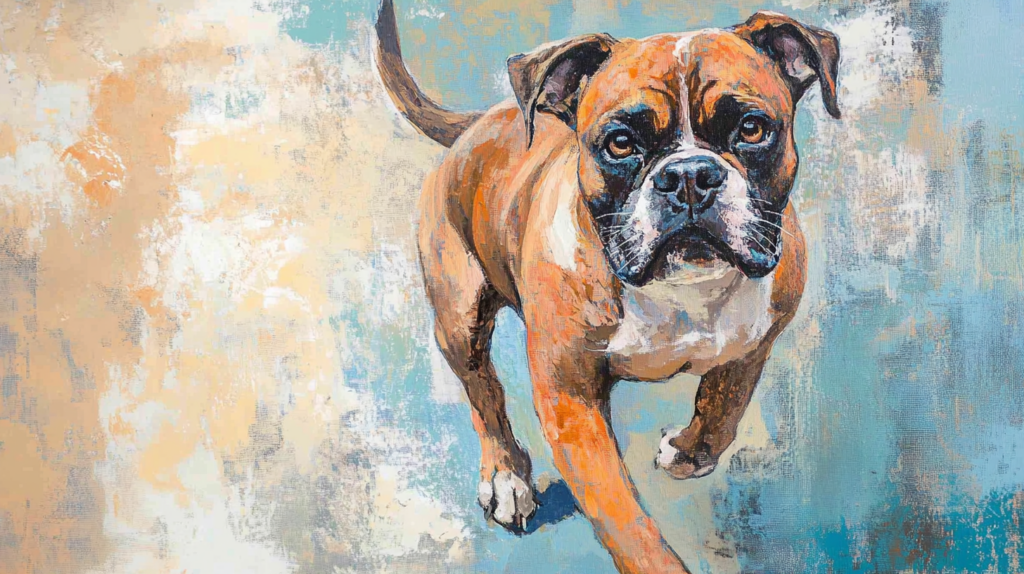
3. Growth Stages of Boxers
Understanding the growth stages of Boxers can provide valuable insights into their development from adorable puppies to majestic adults. This breed undergoes several key phases, each marked by unique physical and behavioral milestones.
Puppy Development
Newborn Stage (0-2 Weeks)
At this stage, Boxer puppies are entirely dependent on their mother. They rely on her for warmth, nutrition, and care. Their eyes and ears remain closed, making them little bundles of vulnerability.
Transitional Stage (2-4 Weeks)
As they reach two weeks old, puppies begin to open their eyes and ears. Their vocalizations become more pronounced, signaling their growing curiosity about the world around them.
Socialization Stage (4-12 Weeks)
This is a crucial period for learning! Puppies start to explore their environment, play with littermates, and interact with humans. During this time, it’s essential to expose them to various sights, sounds, and experiences to foster healthy social skills.
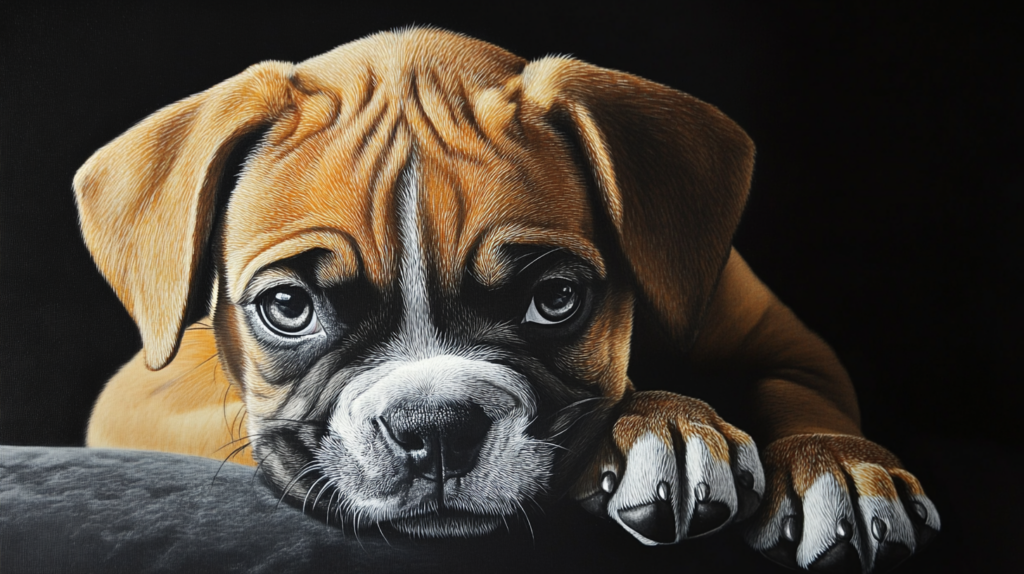
Adolescence to Adulthood
Juvenile Stage (3-6 Months)
Rapid growth occurs during this phase. Puppies will begin teething and may display some typical puppy behaviors such as chewing and digging. Training should be consistent and patient during this time.
Adolescent Stage (6 Months – 1 Year)
Boxers can be a bit rebellious! They may test boundaries as they transition into adolescence, often showing bursts of energy and playfulness. Regular exercise is vital here to manage their high energy levels.
Adult Stage (1 Year and Beyond)
By the age of one year, most Boxers reach their full size but continue maturing emotionally. They become more settled companions while retaining their playful nature well into adulthood.
Recognizing these stages helps owners provide appropriate care tailored to each developmental phase, ensuring a happy and healthy Boxer throughout its life!
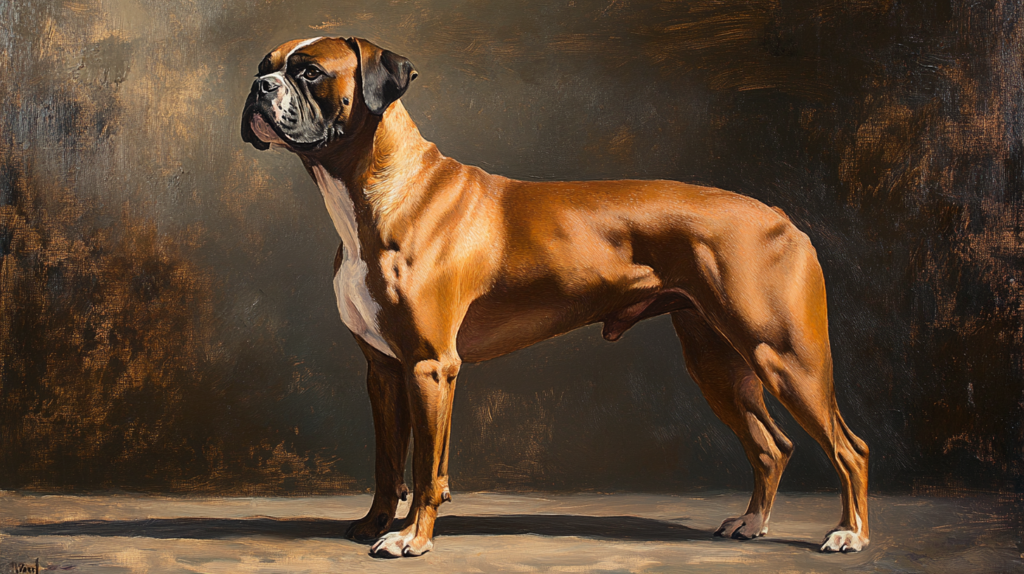
Conclusion
Choosing a Boxer as your furry companion is an exciting journey filled with playful antics and loyalty. Here’s a quick summary of Boxer characteristics to help you make an informed decision:
- Size: Medium to large; males stand 23-25 inches, females 21-23 inches.
- Weight: Males weigh 60-70 pounds, while females range from 50-60 pounds.
- Physical Traits: Muscular build, square-shaped head, and short coat in various colors and patterns.
Understanding the Boxer size and physical characteristics is essential for potential owners. Consider how these features align with your lifestyle and living situation. Boxers require ample exercise, companionship, and love to thrive. Their friendly nature makes them wonderful family pets.
Adopting a Boxer means welcoming a loyal friend into your life—one that will bring joy and energy for years to come!
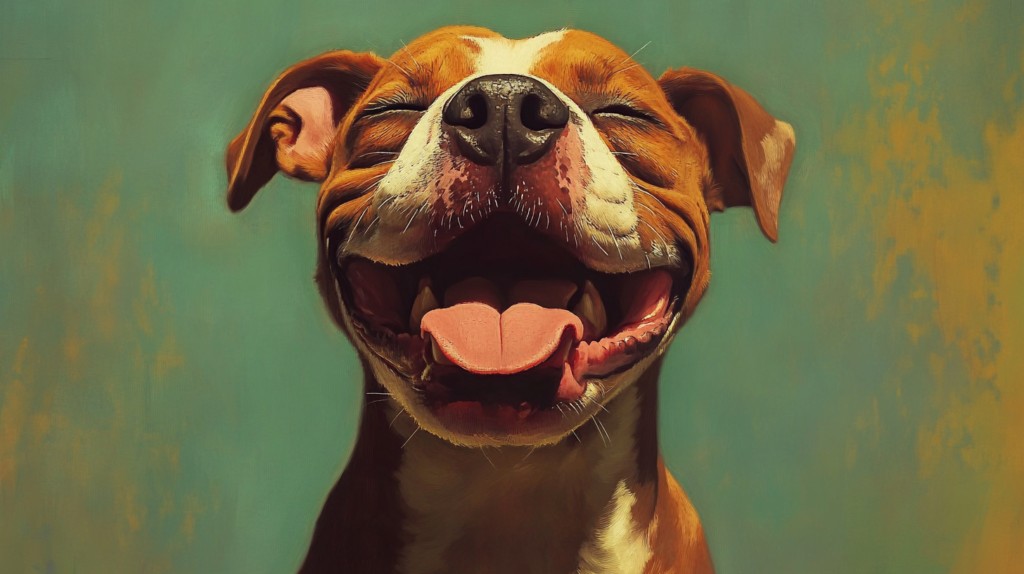
FAQs (Frequently Asked Questions)
What is the typical size and weight range for Boxer dogs?
Boxer dogs are classified as medium to large breeds. Males typically weigh between 65 to 80 pounds, while females usually weigh between 50 to 65 pounds. Understanding these size differences is crucial when considering a Boxer as a pet.
What are the common physical characteristics of Boxers?
Boxers are known for their muscular build and athleticism, featuring a square-shaped head with strong jaws. Their coat colors commonly include brindle, fawn, and white, and they have distinctive facial features defined by breed standards from organizations like the American Kennel Club.
How do Boxers compare in size to similar breeds?
When compared to similar breeds, Boxers are generally larger than Boston Terriers but smaller than Cane Corsos. This size comparison can help potential owners understand how a Boxer may fit into their living situation.
What are the different coat colors and patterns found in Boxers?
Boxers come in several coat colors, including brindle, fawn, and white. There are variations within these colors that can include different patterns. Understanding these options is important for prospective owners who have preferences regarding appearance.
What should I know about the growth stages of Boxers?
Boxer puppies go through distinct growth stages that significantly impact their size and behavior. Key developmental milestones occur from puppyhood to adulthood, making it essential for potential owners to be aware of these changes to provide proper care.
What unique features do Bobtail Boxers have?
Bobtail Boxers are characterized by their shorter tail length and specific shape. These unique features differentiate them from standard Boxers and are part of what makes this variation appealing to some dog owners.

